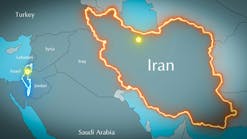As the US slowly emerges from this year’s unrelenting cold and snowy winter, highways, city streets, and interstates have taken a beating. Soon road crews will begin to repair the endless potholes, cracks, and road damage that hard winters produce.
Snow plows, freeze and thaw cycles, and the salt that is added to the roads during the winter wreak havoc on asphalt roads and parking lots. Natural developing cracks occur because of oxidation, traffic loads, and normal day-to-day deterioration. When hairline cracks expand with areas of depression and are not sealed properly, damaging materials such as deicing chemicals, water, impurities, and sunlight will infiltrate the crack and accelerate the damage to the pavement surface. All this combined with normal vehicle traffic can quickly impair any pavement damage to asphalt surfaces.
Asphalt statistics
The US Energy Information Administration shows demand for asphalt rises in the early spring months when road repair starts and continues to peak at the end of summer, which was 16.8 million bbl in August 2017. The US leads the world in asphalt and road oil production according to OGJ’s annual survey on Worldwide Refining, at 646,955 b/d. Combined, Russia, South Korea, and China round out the other top producers of asphalt at 388,161 b/d. California is the largest producer in the US at 75,150 b/d and Texas is second at 58,140 b/d.
US refineries in 2017 processed a 42-gal barrel of crude oil to yield 46.5% of finished motor gasoline or about 20 gal and 29% or 12 gal of ultra-low sulfur distillate fuel oil (mainly sold as diesel fuel and heating oil in some states). Asphalt and road oil yield is markedly lower at 1.9% or less than 1 b/d. Even though the yield on asphalt seems insignificant, imagine without this basic residue from the refining process, what our nation’s roadways and economic progress of the 20th century would have been without asphalt.
According to the National Asphalt Pavement Association, 94% of US roads and streets are asphalt. Since 1824, asphalt has paved more than 2.7 million miles of roads.
Asphalt’s launch
The first bitumen lake was found on the twin-island nation of Trinidad and Tobago, off the northern coast of South America and was used to recaulk Sir Walter Raleigh’s ships and was the start of asphalt imports in 1595. Three hundred years later, in 1875, the Trinidad bitumen asphalt was used to pave the famous Pennsylvania Avenue per the direction of President Ulysses S. Grant.
Texas Gulf Refining and Texas refining companies along with Sun Oil Co. in Pennsylvania began producing asphalt in 1902. US Congress established a mechanical and chemical laboratory the following year to conduct and test road materials. Asphalt, the leftover residue of the refining process, became a better alternative than the imported Trinidad and Tobago bitumen. This derivative presented a more sustainable economic means of improving roadways for the thousands of automobiles that were rolling off assembly lines after World War I.
The demand for asphalt continued during World War II when runways needed the ability to handle larger and heavier loads of airplanes delivering supplies. The innovation required for this feat, inspired asphalt composition and paving technologies later used for the enormous postwar boom for building roads.
Congress passed the State Highway Act with $51 billion set aside to be used by the states for road construction. The Highway-Aid Act of 1956 provided “ninety percent federal funding for a system of interstate and defense highways”. The Eisenhower administration wanted, if ever the threat of a nuclear attack, an efficient way to evacuate major cities.
Drivers will begin traveling on our nation’s highways and roads again this summer, just remember when stuck in road construction traffic, those potholes and cracks that were nuisances this winter are getting fixed, thanks to asphalt.

Laura Bell-Hammer | Statistics Editor
Laura Bell-Hammer has been the Statistics Editor for the Oil & Gas Journal since 1994. She was the Survey Editor for two years prior to her current position with OGJ. While working with OGJ, she also was a contributing editor for Oil & Gas Financial Journal. Before joining OGJ, she worked for Vintage Petroleum in Tulsa, gaining her oil and gas industry knowledge.


